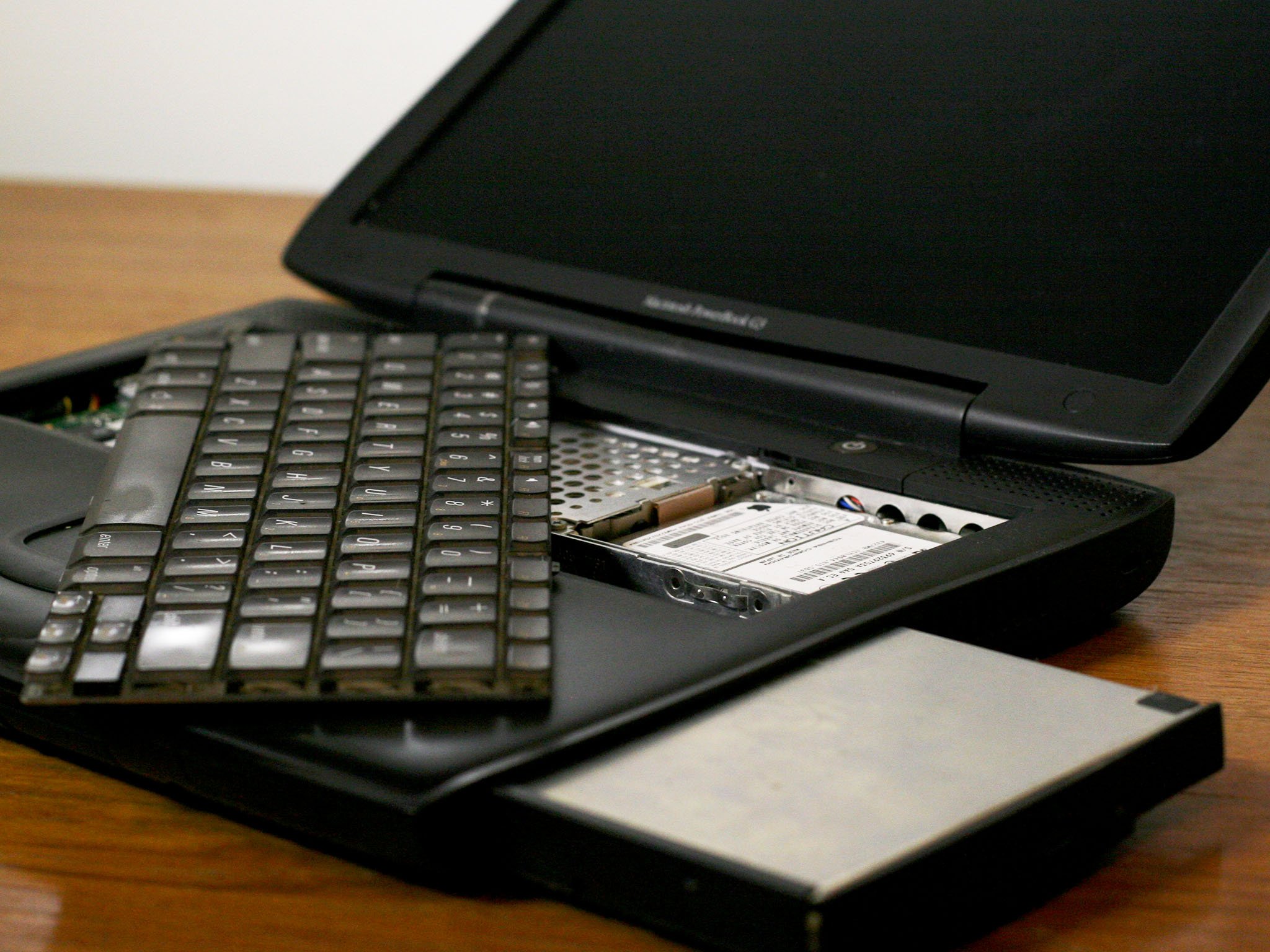A shadetree mechanic's lament: The death of the upgradeable MacBook

I've been doing some housecleaning lately and I've found a few older Macs that I'd stopped using a long time ago, but never had the heart to sell or recycle. Among them is a "Lombard"-era PowerBook G3 that I got when I was working at Macworld back in the early oughts. As much as I like the design of today's MacBook Airs and MacBook Pros, I find the old machine a great looking system too, and I'm a bit sad that Macs aren't still made like this.
There are certainly some design elements that made it stand out, like the bronze translucent keyboard. But what I love about it the most is how modular it is. It's something you don't find in today's systems.
Shadetree mechanic's dream
When I say modular, I mean that the PowerBook G3 was trivially easy to work on yourself. It's most obvious when you look at the sides of the PowerBook, because it had removable modules on either side for the battery and the CD-ROM drive. Integrated, tensioned flippers built into the lower front of the PowerBook released and slightly pushed out these modules so you could slide them out.
That way, if you didn't need a CD-ROM drive but you did want an couple hours of battery life, you could simply slide out the drive and put in a second battery. As I recall you could also get other drive/battery bay modules, like an iOmega Zip drive. It was a cool idea.
There was also a PC card slot; remember those? PC card were solid state expansion cards that let you hook up to exotic network and audio interfaces, memory cards with additional storage capacity and other things.
But that's only setting the stage for the true modularity of this PowerBook. Because removing the keyboard only requires you to press down on two locking tabs at the top, situated to the right of the Escape key and to the left of the F8 key. Still connected by its ribbon cable, the keyboard could flop over onto the trackpad and you could get at the actual guts of the PowerBook. If you needed to replace or upgrade the hard drive, there it was (though with a staggering 4 GB of storage capacity in mine, I didn't really need to upgrade it while I had it.
RAM is protected underneath a metal tray held in place with screws. But they're regular old Philips head screws. 64 MB was a lot of RAM, though. For the day. You could get at the rest of the guts pretty easily, too — take the PowerBook down to bare metal them build it back up, and no one would be the wiser.
Master your iPhone in minutes
iMore offers spot-on advice and guidance from our team of experts, with decades of Apple device experience to lean on. Learn more with iMore!
A sealed black box
Compare that to now. A couple of weeks ago I had to bring my Retina MacBook Pro in for a trackpad replacement — covered under AppleCare, fortunately, since it's more than a year old — and the technician replaced the entire top case. That includes the keyboard and the battery.
Now, I'm certainly not complaining about getting free stuff — the keyboard no longer shows any sign of wear, and the battery is charging as good as the day the MacBook Pro was new. But my point is that Apple's design and engineering of its laptop computers has grown dramatically in complexity, and that complexity has come at a cost.
Especially when you're dealing with a MacBook Pro or a MacBook Air, the days of the shadetree mechanic are largely over. Apple's new systems are just too closed to let anyone inside.
The last MacBook Pros with removable batteries went out of circulation back in 2009. Things have gone downhill for tinkerers from there. Apple has reengineered the MacBook line with soldered RAM, so you can't upgrade RAM even if you want to. You have to order your Mac with how much you think you'll need during its entire life cycle, or expect to replace it at some point with a beefier system.
Even with storage we've hit a wall. Other World Computing and Transcend both offer SSD kits that will let you upgrade your older MacBook Air or Retina MacBook Pro with more (and faster) storage. But to date they haven't offered ones for Haswell-era MacBooks, which use a different interface (PCI Express, or PCIe, instead of Serial ATA, or SATA). People who have had their Haswell-era MacBooks for a year may already be feeling the storage pinch but can't do anything about it, at least not yet. (OWC tells me upgrades for newer MacBooks are coming, but don't have a release date.)
Tinkerer's Macs
There's still one tinkerer's laptop left in Apple's arsenal: the 2012-era 13-inch MacBook Pro, with 4 GB of RAM and a 500 GB hard drive. It's not trivial to take it apart, but you can do it, and you can upgrade the RAM yourself and replace that standard SATA hard disk drive with an SSD.
Bumping up RAM and replacing the hard drive with an SSD actually makes that a blistering fast little system. If you've already invested in one or can get one for cheap it may be worthwhile to do, but I wouldn't recommend that anyone buy one today just for the sake of taking it apart; your money is better spent on one of Apple's other, non-upgradable systems. Those systems may not be good for tinkering but they are quick and reliable.
Even my old 2009-era polycarbonate white 13-inch MacBook made for a fun hobbyist machine. I bumped up RAM from 2 GB to 8 GB and replaced the 250 GB hard drive with a 240 GB SSD — it's blisteringly fast now and lots of fun to use, still. So the older machines with some ability to come apart can be reinvented and reworked to be fast, usable systems still.
Grass isn't greener
Of course, things aren't great on the PC side of the fence when it comes to laptops and upgradability as well, but that's not the point. Apple's on the leading edge of design, and they also talk a good game about surprising and delighting their customers.
Nothing would surprise and delight some of us more than a MacBook that could still be taken apart and tinkered with. Do I expect Apple to do anything about it? No. But I can dream.

